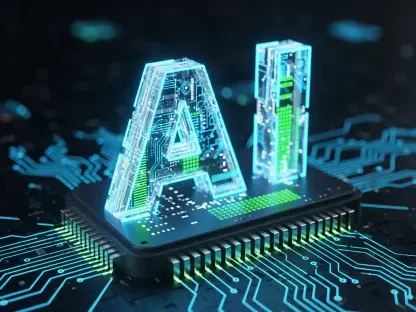The world of software development is being transformed by AI agents, and at the forefront of this transformation is OpenAI Codex. As a versatile system, Codex is reshaping how developers approach coding tasks by acting as a collaborative partner rather than just a tool. We’re joined by Anand Naidu, an expert in both frontend and backend development, to discuss the impact and capabilities of this innovative technology.
What is OpenAI Codex, and how does it differ from traditional code assistants?
OpenAI Codex is a cloud-based AI coding agent that goes beyond the limitations of traditional code assistants, which typically function as simple autocomplete tools. Codex serves as a collaborative partner capable of independently taking on a variety of tasks, like writing entire features, fixing bugs, and even proposing new code solutions. What’s unique is its ability to handle multiple tasks concurrently, each managed in an isolated cloud environment, allowing for a more robust and dynamic development process.
How does Codex enable developers to delegate various coding responsibilities?
Codex empowers developers by allowing them to offload a wide range of coding responsibilities. By simply typing a prompt in the ChatGPT interface, developers can assign tasks such as writing code, answering questions about the codebase, fixing issues, and proposing pull requests for review. This delegation not only frees up developers from mundane tasks but also enables them to focus on more complex problems, leveraging Codex’s ability to manage each task in a separate environment preloaded with the developer’s repository.
Can you explain how Codex operates simultaneously across multiple tasks?
Codex’s parallel processing capabilities are a game-changer for developers. Each task assigned to Codex operates independently within its own isolated environment in the cloud. This separation prevents any interference between tasks and ensures that Codex can work on several assignments at once—whether that’s writing new features, debugging, or running tests—each without slowing down the others. This parallelism greatly enhances efficiency and productivity for development teams.
How do developers access Codex and interact with their codebase using the ChatGPT interface?
Developers interact with Codex through the ChatGPT interface by issuing commands or questions. This can be done either by clicking “Code” to start a coding task or “Ask” to inquire about the codebase. This interaction is seamless and intuitive, allowing Codex to read and edit files or run necessary commands like linters or test harnesses. Developers can keep track of Codex’s progress and results in real-time, making collaboration straightforward and transparent.
In what ways does Codex provide verifiable evidence of its actions during task completion?
Codex provides verifiable evidence of its actions by offering citations of terminal logs and test outputs. This transparency not only allows developers to trace the steps Codex takes but also builds trust by providing concrete evidence of its processes. Such meticulous tracking ensures developers can effectively manage and review the changes Codex implements, maintaining both accuracy and accountability.
What are the key features of the codex-1 model, and how is it optimized for software engineering tasks?
The codex-1 model, the engine behind Codex, is tailored specifically for software engineering. It’s optimized through reinforcement learning across a wide range of real-world coding tasks, enabling it to produce code that closely mimics human coding styles and adheres to explicit instructions. The model can run iterative tests to ensure the production of correct results, showing impressive performance on coding evaluations without the need for excessive configuration.
How was Codex trained to adhere to human coding styles and instructions?
Codex was trained using reinforcement learning, with a focus on real-world coding environments to understand and adapt to human coding styles and instructions. This training helps Codex to not only generate code that aligns with human preferences but also understand complex instructions and execute them effectively. By iteratively learning from various scenarios, Codex can perform tasks more accurately and efficiently.
What real-world applications have early adopters found for Codex?
Early adopters have discovered several practical uses for Codex in the real world. Organizations are leveraging it to tackle repetitive tasks, like refactoring or writing tests, which would typically disrupt developer focus. For example, Cisco is using Codex to accelerate the realization of ambitious engineering ideas, Temporal employs it for faster feature development and debugging, and Superhuman allows product managers to make code changes without direct developer intervention. It’s also being used to enhance test coverage and refactor code in areas like autonomous driving technology, as demonstrated by Kodiak.
What security and safety measures has OpenAI implemented in Codex to prevent misuse?
OpenAI has put comprehensive security measures in place to safeguard Codex. The system functions within a secure, isolated cloud container with no internet access during task execution, limiting its interaction strictly to the provided codebase and pre-installed dependencies. Furthermore, Codex has been trained to detect and reject any requests for malicious software development, supported by enhanced policy frameworks and rigorous safety evaluations to prevent misuse.
How does OpenAI envision the future of development with AI tools like Codex?
OpenAI sees a future where the integration of AI tools like Codex radically transforms the development process. The vision includes a convergence of real-time AI pairings with asynchronous task delegation, enhancing productivity and interaction across everyday development environments. This new paradigm aims to standardize high-quality code production, enabling developers to seamlessly blend AI assistance into their workflows to tackle more strategic and creative aspects of software development.
How might AI agents shift a software engineer’s focus to higher-order tasks?
AI agents, by automating routine coding tasks, shift a software engineer’s focus towards higher-order responsibilities such as strategic design and communication. As more basic and repetitive tasks are managed by AI, engineers can devote their expertise to orchestrating complex projects, refining system architecture, and improving collaborative workflows. This transition aligns with Mitch Ashley’s insights, emphasizing the reduction of rote tasks in favor of more impactful design and orchestration efforts.
What potential benefits and improvements could Codex bring to small teams and individual developers?
Codex stands to greatly benefit small teams and individual developers by streamlining their workflows and boosting productivity. By managing repetitive and mundane tasks, Codex frees developers to focus on innovation and more complex problem-solving. Smaller teams, in particular, may find Codex invaluable for scaling efforts without requiring additional manpower, thereby improving project outcomes and reducing development times.
In what ways could Codex evolve in the future to enhance software development workflows?
The future evolution of Codex could see it becoming even more integrated into development processes. We might anticipate more interactive and flexible workflows, allowing for real-time guidance, collaborative strategy formulation, and proactive updates as tasks progress. As Codex matures, its potential to enhance productivity, foster creative problem-solving, and seamlessly integrate into various aspects of software engineering could be fully realized, making it an indispensable tool for developers.








